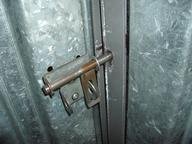Quiz Answer Key and Fun Facts
1. Who originally built the Tower of London which was subsequently used as a prison (for important prisoners) until as late as the twentieth century?
2. Rudolf Hess, Hitler's deputy, was imprisoned at the Tower of London.
3. Ludgate prison was located on a site near to which major present-day London tourist attraction?
4. One of these London prisons held prisoners from Norman times, right up until the beginning of the twentieth century. Which one is it?
(Clue: it had more than one building throughout its lifespan.)
5. The Mayor of London in 1423 was Dick Whittington and he was concerned about the state of prisons in his city. He gave a bequest for one of them to be rebuilt and as a consequence it was colloquially named after him. Which prison?
6. What did Jeremy Bentham, Elizabeth Fry and John Howard have in common?
7. There were a number of smaller prisons called Compters. They included a Bread Street Compter and a Poultry Compter.
8. Which prison was the first in London to be designed and built as a prison? It stood in various forms from just after the Norman conquest to Victorian times and was located on the banks of a river (the river is now largely forgotten).
9. Where is the smallest London gaol?
10. Millbank prison, opened in 1816 and demonstrating new ideas and theories on the structures of prisons, was a storming success.
11. Which prison was historically used to house religous prisoners (that is, those who committed religous offences, not prisoners who liked to pray a lot!)?
12. Which prison was Charles Dickens' father taken to when he was imprisoned for debt?
13. Some of the ships used previously to transport prisoners to the New World, were later converted into floating prisons. What were they known as?
14. There are five large prisons in London today, four of which were built in the Victorian era. Which ones are they?
15. Which of London's gaols, still receiving prisoners, is the oldest?
16. One of the London prisons, designed by Sir Charles Barry, became known as the 'portal to the penal colony' meaning that prisoners sent there could hope to earn (through work and behaviour) a ticket to the penal colonies in Australia. Which one?
17. Holloway started receiving a particularly difficult group of prisoners from 1906. Who were they?
18. Who built Wormwood Scrubs?
19. Latchmere House was an interrogation centre and prison used by the secret service (MI5) from 1939. True or False?
20. Which of these is not/has never been a real London prison?
Source: Author
Flapjack44
This quiz was reviewed by FunTrivia editor
bloomsby before going online.
Any errors found in FunTrivia content are routinely corrected through our feedback system.

